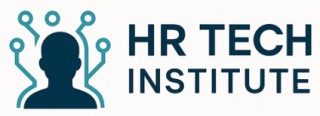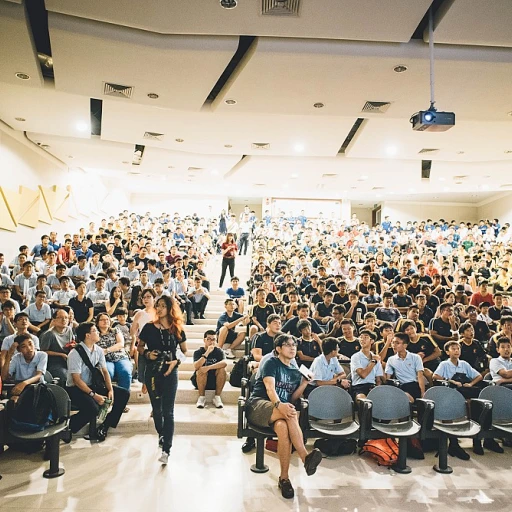
The Evolution of Time Off Policies
Tracing the Development of Leave Policies Through the Years
The way companies manage time off for employees has undergone significant changes over the years. Historically, businesses operated with rigid vacation time structures, requiring workers to earn or accrue days through long service periods. Over time, this accrued paid time off (PTO) evolved to incorporate more flexible leave options like discretionary leave and sick leave, allowing employees the space for their personal time needs. Looking back, the transformation of these time policies was largely driven by a growing awareness of work-life balance concerns. As more workers sought a life balance that allowed personal time alongside their professional commitments, employers began to offer more adaptable time policies. This movement toward greater flexibility witnessed policies like unlimited PTO and unlimited vacation gaining traction among progressive organizations. Another pivotal moment in the evolution of these policies was the introduction of the discretionary time policy. This innovative approach advanced the idea that more trust in employees' ability to manage time and their workloads contributes to overall job satisfaction and performance. In line with this philosophy, trust-based time off or DTO policies emerged as popular alternatives to traditional models, providing the dual benefit of reduced administrative overhead while promoting trust and accountability at work. This shift also accompanied an acknowledgment that employee needs could not be generalized. Recognizing the diversity in employee circumstances, companies began moving away from one-size-fits-all time off policies. Instead, they created PTO policies that allowed employees a more personalized, flexible time approach to fit their unique lifestyles. As employers continue evolving these policies, they face the ongoing challenge of balancing operational demands with providing sufficient employee time off. The impact of these policies continues to shape workforce dynamics, with employees increasingly valuing those roles that offer them comprehensive and considerate time policies.Benefits of Discretionary Time Off
Exploring the Advantages of Flexible Leave Options for Organizations
The introduction of discretionary time off (DTO) brings a refreshing change to traditional paid time off (PTO) policies, offering various advantages that can transform the landscape of workforce management. One of the most notable benefits is the flexibility it provides to employees, as they are no longer constrained to a fixed number of vacation days or a rigid time policy. This shift not only helps in maintaining a better work-life balance but also enhances the personal satisfaction and overall well-being of the workforce. Implementing a discretionary leave framework, where employees can take unlimited vacation days, empowers them to manage their own time effectively according to their needs. When employees have the freedom to decide on their preferred vacation time without being limited by a set number of days, it often leads to increased motivation and productivity. The sense of trust bestowed by employers through a well-crafted unlimited PTO policy fosters a more justified and responsible approach to taking leave. Moreover, offering unlimited vacation can serve as a powerful incentive for attracting and retaining top talent. In a competitive employment market, companies that adopt such flexible time policies stand out as progressive employers that value the importance of life balance. Potential and current employees are more likely to appreciate a working environment where they feel trusted and not micromanaged, which can result in enhanced loyalty and lower turnover rates. Organizations that allow employees discretionary leave also observe a reduction in unscheduled absenteeism. When employees can plan their tasks around their personal obligations, like sick leave, they are less likely to take unplanned days off. This advantage extends to the company's operational efficiency, as managers and HR can better manage time off around peaks and troughs in business activity. Despite these benefits, companies must ensure a comprehensive DTO policy is in place to mitigate any potential pitfalls. Embracing trust-based time off could be the stepping stone for companies aiming to develop innovative leave policies. This approach is vital for maximizing the aforementioned benefits and integrating them into the broader goals of the organization. Adopting such initiatives not only enhances employee satisfaction but also aligns with the future of work paradigms.Challenges in Implementing Discretionary Time Off
The Complex Landscape of Implementing Flexible Time Policies
While discretionary time off (DTO) policies offer significant benefits for employees and employers alike, practical challenges can arise when implementing these flexible time policies. Aiming to provide work-life balance, unlimited vacation time, and increased personal days, DTO policies can be difficult to manage effectively and equitably.
Firstly, a lack of clear guidelines can lead to confusion. Employees might wonder how much leave is acceptable, while managers grapple with approving or denying requests without a clear framework. This ambiguity can lead to unequal access to unlimited PTO with some employees feeling more empowered to use it than others.
Tracking and accountability are other significant challenges. Without a structured method to manage time taken off, companies risk productivity disruptions. Many organizations find it tough to monitor and maintain productivity and commitment levels, making it imperative to develop robust tracking systems.
Adjusting to cultural shifts within a company when transitioning to a discretionary time policy can also be a hurdle. The shift requires a high level of trust in employees to manage their own time effectively. Employers must set up a culture that emphasizes accountability and results rather than hours worked, which can initially be difficult to instill.
Another critical aspect is the potential mismatch between expectations and reality. Employees might expect unlimited vacation or flexible time, but in reality, workloads and expectations might not adjust accordingly, leaving employees unsure about how much leave they can actually take.
Tools and technologies come into play as a solution, enabling better management of employees' time. Digital platforms can help manage time tracking, accruing days, and ensuring a fair distribution of vacation time. To effectively implement these systems, companies need to ask essential questions to HR teams for insights.
In conclusion, while the shift to discretionary leave policies comes with its benefits, the journey can be challenging. With thoughtful implementation, strategic use of technology, and clear pto policies, companies can overcome these challenges and successfully create a supportive work-life environment.
Technology's Role in Managing Discretionary Time Off
Integrating Technology for Discretionary Time Off Management
Managing discretionary time off (DTO) policies effectively can be quite a task for any company, especially given the flexibility it provides employees. The right technology plays a crucial role in ensuring that companies can effectively handle this fluid environment. Implementing tech solutions for managing DTO, such as PTO (paid time off) tracking systems, is essential for staying on top of time policies. For companies offering unlimited vacation or flexible time off, digital tools can track employees' days without traditional caps, making sure all leave, whether it be vacation time or sick leave, is recorded accurately. These systems help keep an eye on the number of days an employee is away, monitoring the work-life balance effectively and ensuring everyone adheres to the respective company policy. A robust DTO management system will allow employees to easily request discretionary leave, keeping transparency between them and the employer. Employers also benefit from such systems as they simplify the process of employees managing their own time, which can lead to increased employee satisfaction. Besides streamlining the process, technology can predict workforce dynamics trends by reviewing patterns, thus aiding in the proactive management of employee time policies. Monitoring and analyzing these patterns helps in adapting the DTO policy to better serve both company goals and employees' personal time requirements. "Unlimited PTO" may sound daunting, but with the right tech stack, it becomes more manageable for both employees and employers. In conclusion, the role of technology in managing discretionary leave and helping companies adopt such innovative policies is invaluable. The seamless integration of these tools not only enhances how employees manage time but also supports companies in achieving a balanced work environment.Case Studies: Success Stories and Lessons Learned
Successful Implementations in Various Sectors
Implementing discretionary time off (DTO) policies has led to significant success stories across various sectors. Companies that have embraced flexible time and unlimited PTO policies have observed a positive shift in workforce dynamics. Many firms have used these policies to improve employee satisfaction and work-life balance. For instance, tech companies have seen increased innovation and productivity as employees take advantage of personal days without the constraints of traditional accrued days.Lessons from Implementing DTO Policies
Despite the benefits, implementing DTO is not without its challenges. One major lesson learned is the need for clear guidelines to ensure employees fully understand how to manage time effectively. Companies must communicate the availability of unlimited vacation time and discretionary leave benefits transparently to avoid misunderstandings. Importantly, this involves adapting the time policy framework to incorporate flexible PTO policies which support not just vacation time but also sick leave and other personal matters.Balancing Flexibility and Accountability
Employers must strike a balance between offering flexibility and maintaining accountability. Success comes from developing a culture of trust where employees feel empowered to manage their own time while ensuring that work responsibilities are met. Frequent feedback and open communication have proven essential in companies where DTO has been successfully implemented, ensuring that performance is not compromised even with the flexibility of unlimited PTO. Many organizations have found that setting boundaries and periodically reviewing the policy's impact helps maintain a positive work environment. By learning from these cases, more employers can harness the potential of discretionary time off, creating a more engaged and productive workforce.Future Trends in Time Off Policies
Anticipating the Future of Leave Initiatives
The future landscape of leave initiatives is gearing towards more inclusive and flexible approaches, especially with the growing wave of discretionary time off (DTO) and unlimited vacation days. As companies continue to adapt and innovate, several trends in time policies are emerging to accommodate the diverse needs of the modern workforce.- Flexibility in work arrangements, including remote work, is expected to complement discretionary time policies, creating a hybrid work environment that respects the personal needs of employees.
- As the concept of unlimited PTO gains traction, companies will need to establish clear guidelines to prevent potential burnout while ensuring fairness among employees.
- Further innovation in HR tech will likely provide employers with tools to monitor time-off trends and make data-driven decisions to enhance their pto policies.













